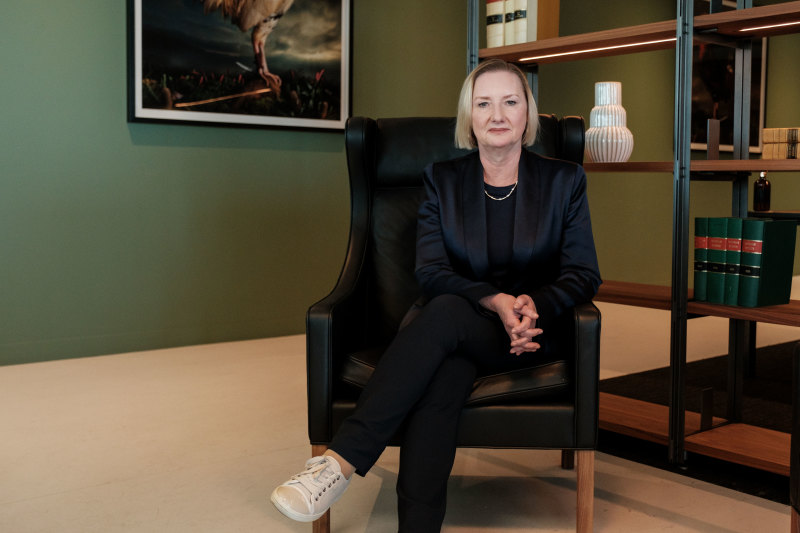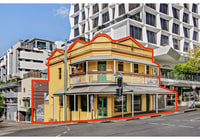
Build-to-rent needed to help tackle housing crisis: Lloyd-Hurwitz
Susan Lloyd-Hurwitz, the property industry leader who now heads the new national housing supply council, has called for government action on planning and land availability to support the creation of institutionally-owned, build-to-rent homes to help address the housing crisis.
“It’s hard work, but it’s essential work to move beyond a place where there are half a million households in rental stress,” Ms Lloyd-Hurwitz told The Australian Financial Review.

“They’re actually choosing between paying the rent and putting food on the table and that’s not an exaggeration. In a country as wealthy as Australia that should not be the case.”
Led by the former Mirvac chief executive, the interim National Housing Supply and Affordability Council – a body that will soon be made permanent – has outlined the barriers to institutional investment in build-to-rent in this country. Topping the list of its 11 recommendations is a call for nationally consistent planning rules that would allow large-scale build-to-rent projects to be treated separately and given “expedited planning and development assessment”.
The report also calls for planning authorities to fast-track the availability of larger plots of land, suited to BTR projects as well as setting “clear and enforceable” housing targets in each state and territory.
“There are a whole host of things that could be done to support the industry as it grows,” Ms Lloyd-Hurwitz said.
“Inclusionary zoning for example, government release of land, calling out build-to-rent as a specific asset class that gets different planing treatment. There are a whole lot of things that could be done to stimulate in the short term this market.”
Buoyed by a tax credit system, build-to-rent is well established as an asset class in the US, where it accounts for 12 per cent of all housing stock. Over the past two decades the UK has made concerted efforts to channel institutional investment into rental housing. The BTR sector there now accounts for 5.4 per cent of the total.
In Australia, BTR housing accounts for just 0.2 per cent of stock.
More broadly, Ms Lloyd-Hurwitz is keen to see the federal government continue to work constructively with the states and territories to meet its ambitious target of 1.2 million new homes built over the next five years.
Genuine planning reforms “embedded in the whole ecosystem” with “best practice put in place right across the country” were high on her wish list as well as agreement on a set of measures to “reduce real and perceived risk to encourage international and domestic institutions to invest in BTR to provide secure homes in a rental format for Australians”.
“The crisis has been decades in the making through persistent undersupply of housing of all types across Australia. There are no quick fixes to this supply crisis,” Ms Lloyd-Hurwitz told the Financial Review.
“I’ve been very encouraged by the federal government stepping into this space finally, there’s now multiple levels of co-operation between federal, state and, hopefully, local government as well, to collectively provide solutions. That’s the first time I’ve seen this level of co-operation in my career.”
Ms Lloyd-Hurwitz, who is also now on the boards of mining behemoth Rio Tinto and investment bank Macquarie Group, said the lack of housing in Australia was primarily a supply side issue, driven by a combination of factors including planning systems causing delay and uncertainty, inefficient land release, cost escalation, labour shortages and most recently financing difficulties due to higher interest rates.
“So there’s a whole range of factors that are building on top of each other, but at the end of the day, we just simply don’t build enough houses to cope with population growth that we have in this country,” she said.
One obstacle to investment in BTR by domestic super funds was the infancy of the sector itself, with little price discovery so far which made it more difficult to price risk and calculate returns. Housing investment is weighted toward individual investors who can absorb lower rental yields in expectation of higher capital returns, partly as a result of tax settings including negative gearing and the capital gains discount.
But Ms Lloyd-Hurwitz sought to assuage any fears that an emerging institutionally-owned BTR asset class would eventually crowd out traditional individual investors.
“We are so far away from that being a problem I don’t think individual investors need to worry. There is literally room for both in this market, we just need more housing.
“We need more capital to be providing more housing and there is a limit to amount of housing that can be provided from individual investors.”











